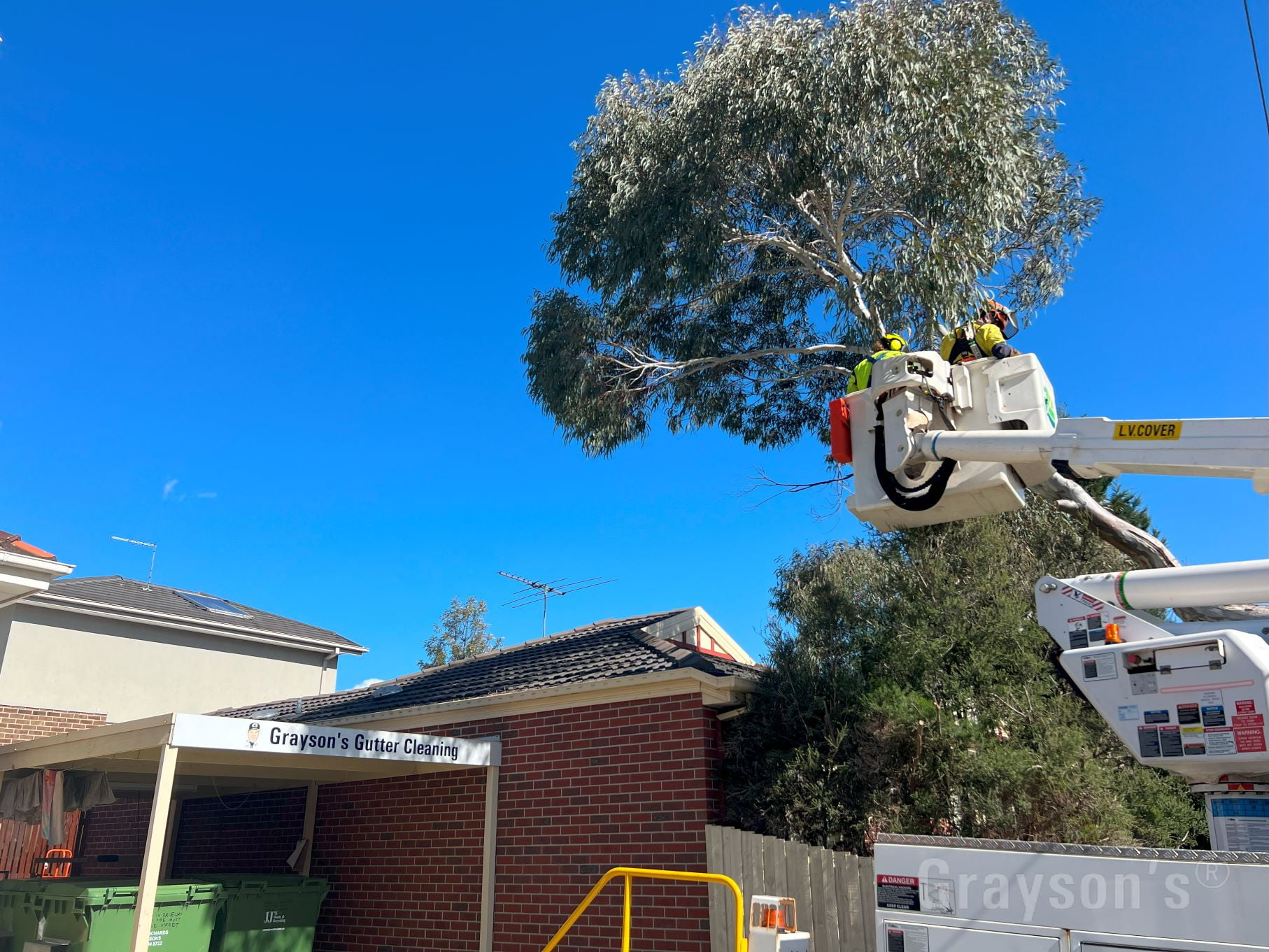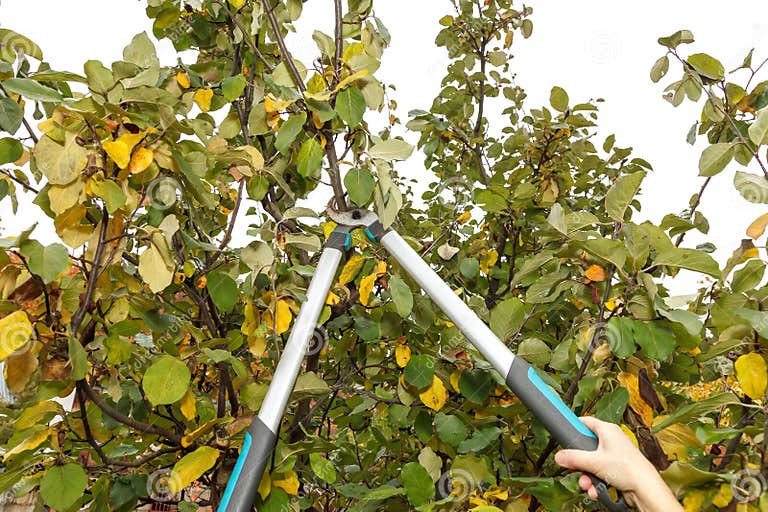Trees can add beauty and value to your property, but if they’re too close to your roof or gutters, they can also cause significant maintenance issues. Overhanging branches can drop leaves, twigs, seeds, and even entire branches into your gutters, leading to clogs, water damage, and potential roof problems. Regular tree pruning not only enhances the health and appearance of your trees but also helps keep your gutters clear and functional.
In this article, we’ll discuss the importance of pruning trees to protect your gutters, the best time to prune, and the proper techniques to ensure your gutters stay debris-free.
Why Tree Pruning is Essential for Gutter Maintenance
1. Prevents Debris from Falling into Gutters
Trees are a major source of gutter clogs, particularly in the fall when leaves and small branches tend to drop. By pruning back overhanging branches, you can significantly reduce the amount of debris that falls into your gutters.
- Leaves: A primary culprit, leaves can quickly accumulate in gutters and form blockages that hinder proper water flow.
- Twigs and Small Branches: Even small branches can cause serious problems by getting stuck in your gutters and clogging downspouts.
- Seeds and Pollen: Trees like maples or pines release seeds that can gather in gutters, promoting further clogging and growth.
Pruning trees around your home creates a buffer that prevents this debris from entering your gutters, making maintenance easier.
2. Reduces the Risk of Branch Damage
Overhanging branches can damage your roof and gutters directly. During storms, heavy winds or the weight of snow and ice on branches can cause them to break off, potentially landing on your roof or in your gutters. This damage not only clogs gutters but can also cause expensive repairs.
By regularly pruning branches that are close to or hanging over your roofline, you reduce the risk of these issues.

3. Improves Roof Health
If trees are left unpruned, branches can scrape against your roof, leading to potential damage. Over time, this can cause shingles to wear down or create areas where moss and algae can thrive, resulting in further debris that makes its way into the gutters.
Pruning trees helps maintain both the roof’s integrity and the gutter system by eliminating branches that could cause unnecessary wear and tear.
4. Better Water Flow and Gutter Function
When trees are trimmed back, there’s less likelihood of leaves and twigs getting trapped in the gutter system. This ensures that water can flow freely, reducing the chances of overflow or blockages that can lead to water damage around your home’s foundation, siding, and landscaping.
By managing the trees near your gutters, you contribute to the long-term performance of your gutter system.

When is the Best Time to Prune Trees?
The timing of tree pruning is crucial for both the health of the tree and the effectiveness of the gutter cleaning process. Here’s when you should prune:
1. Late Winter or Early Spring (Dormant Season)
The best time to prune most trees is during the dormant season—typically in late winter or early spring before new growth begins. During this time, trees are not actively growing, so pruning won’t harm the tree. Pruning in early spring also allows you to remove dead or broken branches before they can cause damage to your roof and gutters.
2. After Leaf Drop (Fall)
For certain species, it’s also beneficial to prune after the leaves have fallen in the fall. This is particularly helpful for deciduous trees, as it gives you a clearer view of the tree’s structure and any branches that may be too close to your home. Pruning in the fall ensures that the tree will be ready for healthy spring growth.
3. Avoid Pruning During Active Growth
While pruning during the growing season is sometimes necessary, it’s best to avoid it when trees are actively growing in spring or summer. Cutting during this time can stress the tree and make it more vulnerable to diseases and pests.
How to Prune Trees for Gutter Protection
Proper pruning techniques are essential to avoid harming the tree or causing unnecessary damage to your roof and gutters. Here are some tips to keep in mind:
1. Remove Overhanging Branches
Start by identifying branches that are hanging directly over your roof or gutters. Cut these back to ensure that they don’t interfere with the flow of rainwater into your gutters. When cutting branches, make sure to cut them back to the branch collar (the point where the branch meets the trunk) to avoid leaving stubs that could invite disease.
2. Trim Away Dead or Weak Branches
Dead, diseased, or weak branches are more likely to break off and fall into your gutters during storms. Remove any branches that show signs of damage or poor health, such as discolored leaves, cracks, or fungus growth. Cutting away dead wood helps keep the tree healthy and prevents branches from falling into your gutters unexpectedly.
3. Focus on Branches That Can Grow Into Gutters
Look for branches that could potentially grow towards your gutters. If they’re left unchecked, they may eventually touch or even enter the gutters, bringing with them leaves, twigs, or seeds. Prune these branches back to create a buffer zone around the gutters.
4. Use Proper Tools
Using the right tools ensures a clean cut and reduces the risk of injury. Use pruning shears for small branches, loppers for medium-sized branches, and a pruning saw for larger branches. If you need to reach high branches, consider investing in a pole saw or an extendable pruning tool.
5. Clean Up After Pruning
Once you’ve pruned the tree, be sure to clean up any fallen branches and leaves. These can quickly make their way into the gutters, negating the purpose of the pruning. Dispose of debris properly to prevent it from accumulating around your home.
Other Considerations for Gutter Protection
1. Install Gutter Guards
Even with regular tree pruning, gutters may still collect some debris. Installing gutter guards can help reduce the amount of material that enters your gutters and prevent clogs. Gutter guards come in various styles, including mesh, screen, and solid covers, and can help filter out large debris while allowing water to flow freely.
2. Schedule Regular Gutter Inspections
Pruning trees alone won’t eliminate the need for regular gutter cleaning and inspection. Ensure you check your gutters at least twice a year—once in the fall and once in the spring—especially after heavy storms or high winds. Regular inspections will catch any issues early and prevent blockages from becoming severe.
Conclusion
Pruning trees around your home is a proactive way to keep your gutters clear and reduce maintenance. By trimming overhanging branches, removing dead or weak wood, and ensuring that trees aren’t growing into your gutters, you can reduce the amount of debris that accumulates and avoid costly repairs to your roof and gutter system.
With the right pruning schedule and techniques, you’ll not only protect your gutters but also help maintain the health and beauty of your trees. By incorporating tree management into your regular home maintenance routine, you’ll keep both your gutters and your property in top condition for years to come.
